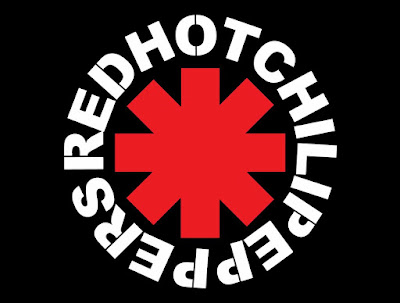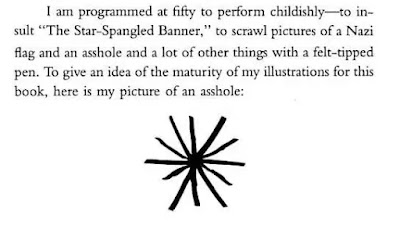Bill tells the story of how his family got some bratwursts which his wife refused to eat because she (and she alone) could detect the flavor of some spice she didn’t like. A day or two later, she finally identified the offending ingredient: star anise. She said it tastes so bad it should be called “star anus,” hence Bill’s title.
(Mrs. Wright is spreading dangerous misinformation, by the way. I am reliably informed by Wikipedia that “Star anise enhances the flavor of meat.”)
In a comment there, Leo tells a remarkably similar story about his own wife. Leo had just switched to a new “all natural” mouthwash made with various spices, and his wife kept smelling him, trying to identify one of the ingredients. Finally she decided that it was, you guessed it, star anise.
About 20 minutes after reading these two star anise anecdotes , I went out for lunch. Bill’s post had mentioned BLTs and had left me craving that prince of sandwiches, so my first thought was to go to a place I know in Taichung that makes excellent BLTs and excellent coffee. It’s about 40 minutes away, though, and going that far during a typhoon just for a sandwich seemed a bit extravagant. By now my craving for excellent black coffee was stronger than my craving for a BLT, so I ended up going to a coffee shop closer to home.
I placed my order and then happened to glance up at the wall behind the counter. Even for someone as jaded to coincidence as myself, this was a bit much:
Yes, that’s star anise. There are several other pictures on the wall in a similar style, but they all depict coffee beans, coffee grinders, and the like. What does star anise have to do with coffee?
The name of the coffee shop is Donutes, suggesting the word donut (even though they don’t sell that product). A donut has the shape of a ring, which is the etymological meaning of anus.
As I’m sure Debbie will already have noticed, star anise has the shape of an eight-pointed star. (The spice’s Chinese name is literally “eight horns” or “eight corners”; the same word can refer to an octagon.) Star anise is basically brown in color but sufficiently reddish for Bill to have connected it with the “spices of red summer” in the Wallace Stevens poem I recently quoted.
A red spice in the form of an eight-pointed star made me think of the Red Hot Chili Peppers logo:
RHCP bass player Flea is known to be a fan of Kurt Vonnegut, and there are persistent rumors (denied by the band) that the logo was inspired by Vonnegut’s famous doodle of, what else, an asshole.






3 comments:
According to RHCP frontman Anthony Kiedis, the logo represents an angel’s asshole as seen from Earth. This is an allusion, whether intentional or coincidental, to the final scene of Goethe’s Faust, where Mephistopheles looks up at the angels hovering overhead and comments on how their backsides stir his appetites.
I mention this because the other famous Faust play, Marlowe’s, has recently come up, namely Faustus’s line about “the face that launched a thousand ships and burnt the topless towers of Ilium.”
Marlowe’s Faustus begins with lofty goals and repeatedly lowers his sights until he is reduced to trying to bang Helen of Troy. Goethe’s follows the opposite trajectory, beginning with a sordid love affair but in the end ascending to Heaven.
It could be just how the photo captured it, and I know this style was for other art and pictures in the room as well, but the drawing or images of the star anise given them a crystal or glass appearance.
As far as the RCHP and their logo, looking it up quickly on Etymonline, Pepper comes from the Latin "Piper", which I thought was interesting given how the story of a Piper in my story ties in with the Red or Rose Stone leading "angels" away from this Earth. Figuratively, one might be left to view their backsides as they ascend or depart for another place.
William,
The star anise color (rust- brown) is interesting
and the eight points of the star anise
and the information about the eight HORNS.
I found this article about the star anise's color,
copy and paste:
"The star anise pod is picked before it ripens and then dried in the sun,
turning it a deep brown or rust color."
~~~~
The reason that caught my eye is because of my many comments
about what I believe to be the ending(rusting)
of The Industrial (Iron) Age.
If you recall my previous comments about the character
Marty McFly in Back to the Future wearing a
reddish-brown down vest
which in several scenes was referred to as a
'sailor's life preserver', ( see link ),
copy and paste from the article about Back to the Future:
"Lou: "Hey, kid! Whad'da do, jump ship?"
Marty: "What?"
Lou: "What's with the life preserver?"
— Lou Carruthers to Marty McFly in 1955
Another interesting connection to the color rust was earlier
when I commented about the movie Leave the World
Behind on your recent post(Ellen and the Thousand Ships)
and linked the clip of the ending of the movie with the
character G.(George) H. Scott, Clay and Archie in the car.
Later on after I linked the Youtube clip on your post,
I decided to look at the movie again, and notice in that particular
scene, the burnish- brownish color of the leather interior of the car
and George's burnish-brown jacket( very FALL ( Autumn colors)
There are several other rust-brown- golden colors in this movie
that I hadn't noticed before including the white and rust color dress
the character Amanda (played by Julie Roberts) is wearing
at the beginning of the trip to the AirBnB shown
in the trailer below.
And speaking of BLT's and probably
just a coincidence, but just last night
Marshall and I were planning on using our last ripe
red tomato(from the garden!)
to make a tasty BLT but we didn't have the L
and I won't eat a BLT without the L.:-))
~~~I guess I just have a liking for L's (el's) ;-))
https://www.history.com/topics/pre-history/iron-age
https://backtothefuture.fandom.com/wiki/Life_preserve
Leave The World Behind | Official Trailer
https://www.youtube.com/watch?v=cMVBi_e8o-Y
Post a Comment